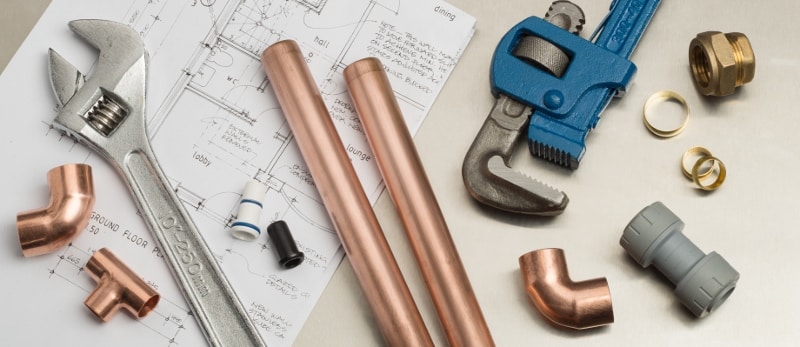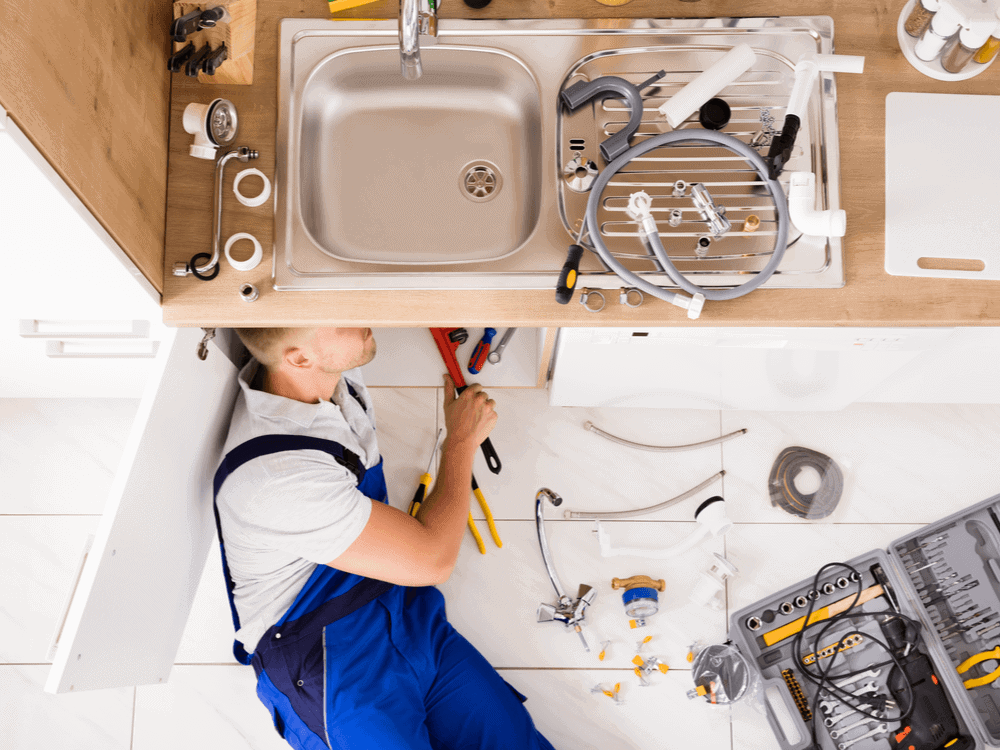Just about everyone may have their own unique rationale about Anatomy of a House: Understanding the Components.

Understanding just how your home's plumbing system functions is important for every single homeowner. From supplying clean water for alcohol consumption, food preparation, and bathing to securely removing wastewater, a well-kept plumbing system is important for your family members's health and convenience. In this extensive guide, we'll check out the complex network that composes your home's plumbing and deal tips on upkeep, upgrades, and handling common problems.
Intro
Your home's pipes system is more than just a network of pipelines; it's a complex system that guarantees you have accessibility to clean water and effective wastewater elimination. Knowing its components and exactly how they interact can help you stop costly fixings and make certain every little thing runs smoothly.
Fundamental Elements of a Plumbing System
Pipes and Tubes
At the heart of your pipes system are the pipes and tubes that carry water throughout your home. These can be made from numerous products such as copper, PVC, or PEX, each with its advantages in regards to sturdiness and cost-effectiveness.
Fixtures: Sinks, Toilets, Showers, and so on.
Components like sinks, commodes, showers, and bathtubs are where water is used in your home. Recognizing just how these fixtures connect to the plumbing system assists in detecting troubles and intending upgrades.
Valves and Shut-off Factors
Valves control the flow of water in your pipes system. Shut-off shutoffs are critical during emergencies or when you need to make repair work, enabling you to isolate parts of the system without disrupting water flow to the entire home.
Water System
Key Water Line
The main water line links your home to the local water system or an exclusive well. It's where water enters your home and is dispersed to numerous components.
Water Meter and Stress Regulator
The water meter measures your water use, while a pressure regulator guarantees that water streams at a risk-free stress throughout your home's plumbing system, preventing damages to pipelines and components.
Cold Water vs. Warm water Lines
Comprehending the difference in between cold water lines, which provide water directly from the primary, and hot water lines, which lug warmed water from the hot water heater, aids in repairing and preparing for upgrades.
Drain System
Drain Pipeline and Traps
Drain pipes carry wastewater away from sinks, showers, and toilets to the sewage system or septic system. Catches protect against sewage system gases from entering your home and likewise trap particles that could cause clogs.
Air flow Pipelines
Air flow pipes allow air right into the water drainage system, avoiding suction that might slow drain and cause traps to vacant. Proper ventilation is important for keeping the integrity of your pipes system.
Significance of Proper Drain
Making certain appropriate drainage protects against back-ups and water damage. Frequently cleaning drains pipes and preserving catches can prevent costly fixings and extend the life of your plumbing system.
Water Furnace
Kinds Of Water Heaters
Water heaters can be tankless or traditional tank-style. Tankless heaters warmth water as needed, while containers save warmed water for instant use.
How Water Heaters Connect to the Pipes System
Recognizing how water heaters attach to both the cold water supply and hot water circulation lines aids in identifying concerns like inadequate hot water or leakages.
Maintenance Tips for Water Heaters
Consistently flushing your hot water heater to eliminate sediment, examining the temperature level settings, and checking for leakages can extend its life-span and boost energy performance.
Typical Pipes Issues
Leakages and Their Causes
Leakages can occur as a result of aging pipelines, loose installations, or high water stress. Attending to leaks without delay prevents water damage and mold and mildew growth.
Obstructions and Clogs
Clogs in drains pipes and toilets are commonly brought on by flushing non-flushable things or a buildup of grease and hair. Making use of drain screens and being mindful of what goes down your drains pipes can prevent clogs.
Indications of Pipes Problems to Look For
Low tide pressure, sluggish drains, foul odors, or uncommonly high water costs are signs of potential plumbing problems that must be resolved promptly.
Plumbing Upkeep Tips
Normal Evaluations and Checks
Arrange yearly pipes evaluations to catch problems early. Try to find indicators of leaks, corrosion, or mineral accumulation in taps and showerheads.
Do It Yourself Maintenance Tasks
Easy jobs like cleansing tap aerators, checking for toilet leaks utilizing color tablet computers, or insulating revealed pipes in cold climates can stop significant pipes issues.
When to Call a Professional Plumbing Professional
Know when a pipes issue requires specialist proficiency. Attempting complicated fixings without correct knowledge can lead to more damages and greater fixing expenses.
Updating Your Pipes System
Factors for Upgrading
Upgrading to water-efficient fixtures or replacing old pipelines can boost water top quality, lower water costs, and raise the worth of your home.
Modern Plumbing Technologies and Their Benefits
Check out technologies like clever leakage detectors, water-saving bathrooms, and energy-efficient hot water heater that can save money and decrease environmental impact.
Price Factors To Consider and ROI
Compute the ahead of time prices versus long-lasting savings when considering plumbing upgrades. Many upgrades spend for themselves via lowered utility bills and fewer repair work.
Ecological Effect and Preservation
Water-Saving Components and Home Appliances
Setting up low-flow faucets, showerheads, and bathrooms can substantially decrease water usage without giving up efficiency.
Tips for Decreasing Water Use
Simple habits like fixing leaks without delay, taking shorter showers, and running full loads of washing and recipes can save water and reduced your utility costs.
Eco-Friendly Plumbing Options
Consider lasting pipes materials like bamboo for floor covering, which is durable and green, or recycled glass for counter tops.
Emergency Readiness
Steps to Take Throughout a Plumbing Emergency
Know where your shut-off shutoffs are located and exactly how to switch off the water supply in case of a ruptured pipeline or major leak.
Relevance of Having Emergency Calls Convenient
Maintain get in touch with info for local plumbing professionals or emergency services conveniently offered for fast action during a pipes dilemma.
Do It Yourself Emergency Situation Fixes (When Appropriate).
Short-term solutions like using air duct tape to spot a leaking pipeline or positioning a container under a dripping faucet can reduce damage until a professional plumbing professional shows up.
Conclusion.
Comprehending the makeup of your home's plumbing system equips you to maintain it properly, saving money and time on repair services. By adhering to routine maintenance regimens and remaining informed regarding modern plumbing modern technologies, you can guarantee your plumbing system runs successfully for many years to find.
HOW YOUR PLUMBING SYSTEM WORKS
Which Pipes Do What?
Blue lines = fresh water supply entering the building
Red lines = hot water supply entering the building
Grey lines = pipes carrying waste away from the building and venting pipes carrying gases away from the building (through the roof)
YOUR MAIN PLUMBING SYSTEMS
There are two main plumbing systems that support your home s basic plumbing needs one that brings clean water into your home, and one that sends dirty water away from your home. Connected to the toilet, bath, shower, and other faucets in your home, these two systems keep your water flowing in the right directions.
ACCESSING FRESH WATER
Fresh and clean water is brought into your home through the main water supply line . Filtered through one pipe, this water is pressured to flow into the various fixtures in your home at any given time.
This water can be sourced from a well located on your property, a pond or river (mostly cottages), or, as in most cases, from the city s municipal water treatment centre. However, it is important to note that water that is untreated, such as the water siphoned from ponds or rivers, may not be safe to drink. Personal water supplies always need to be treated for hardness and contaminants before consumed.
MUNICIPAL WATER SUPPLIES
Improve taste and odour
Remove sediment
Eliminate hardness
Reduce chlorine
COLD WATER SUPPLY VS. HOT WATER SUPPLY
Cold water flows into your home or building through the service line, which then distributes hot or cold water to your fixtures. This line is most commonly run through a central column that runs floor to floor. Hot water runs in short and straight pipes as the longer the pipeline, the more heat that will be lost in the transfer. Having shorter pipes also allows residents to access hot water more quickly.
WASTE WATER SYSTEM
Your wastewater system is divided into two parts pipes that send wastewater away from your home and venting pipes that send sewer gas away from your home. Sewage water travels through pipes that flush the water and waste towards local sewers that are operated and managed by your city or town. Most sewer systems rely on gravity to move the wastewater to where it needs to go.
The further away from your toilet or sink, the larger wastewater pipes become. This allows for waste to be disposed of from various parts of your home or business at once without pipe blockages. The angle and flow of these pipes are also essential for keeping your waste pipes clear of build up.
https://harrisplumbing.ca/how-your-home-plumbing-system-works/

HOW YOUR PLUMBING SYSTEM WORKS
Which Pipes Do What?
YOUR MAIN PLUMBING SYSTEMS
There are two main plumbing systems that support your home s basic plumbing needs one that brings clean water into your home, and one that sends dirty water away from your home. Connected to the toilet, bath, shower, and other faucets in your home, these two systems keep your water flowing in the right directions.
ACCESSING FRESH WATER
Fresh and clean water is brought into your home through the main water supply line . Filtered through one pipe, this water is pressured to flow into the various fixtures in your home at any given time.
This water can be sourced from a well located on your property, a pond or river (mostly cottages), or, as in most cases, from the city s municipal water treatment centre. However, it is important to note that water that is untreated, such as the water siphoned from ponds or rivers, may not be safe to drink. Personal water supplies always need to be treated for hardness and contaminants before consumed.
MUNICIPAL WATER SUPPLIES
COLD WATER SUPPLY VS. HOT WATER SUPPLY
Cold water flows into your home or building through the service line, which then distributes hot or cold water to your fixtures. This line is most commonly run through a central column that runs floor to floor. Hot water runs in short and straight pipes as the longer the pipeline, the more heat that will be lost in the transfer. Having shorter pipes also allows residents to access hot water more quickly.
WASTE WATER SYSTEM
Your wastewater system is divided into two parts pipes that send wastewater away from your home and venting pipes that send sewer gas away from your home. Sewage water travels through pipes that flush the water and waste towards local sewers that are operated and managed by your city or town. Most sewer systems rely on gravity to move the wastewater to where it needs to go.
The further away from your toilet or sink, the larger wastewater pipes become. This allows for waste to be disposed of from various parts of your home or business at once without pipe blockages. The angle and flow of these pipes are also essential for keeping your waste pipes clear of build up.
https://harrisplumbing.ca/how-your-home-plumbing-system-works/
I hope you enjoyed reading our piece about The Inner Workings of Your Home's Plumbing. Thank you so much for taking time to read our piece. Liked our post? Please share it. Let others check it out. Thank-you for going through it.
Schedule And Pricing